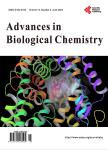Rad7 E3 Ubiquitin Ligase Attenuates Polyubiquitylation of Rpn10 and Dsk2 Following DNA Damage in <i>Saccharomyces cerevisiae</i>
Rad7 E3 Ubiquitin Ligase Attenuates Polyubiquitylation of Rpn10 and Dsk2 Following DNA Damage in <i>Saccharomyces cerevisiae</i>作者机构:Department of Chemistry and Biochemistry California State University Northridge Northridge CA USA
出 版 物:《Advances in Biological Chemistry》 (生物化学进展(英文))
年 卷 期:2015年第5卷第7期
页 面:239-254页
学科分类:1002[医学-临床医学] 100214[医学-肿瘤学] 10[医学]
主 题:Ubiquitin Rad7 Rpn10 Rpn11 Dsk2 DNA Damage Response
摘 要:During Nucleotide Excision Repair (NER) in the yeast S. cerevisiae, ubiquitylation of Rad4 is carried out by the E3 ubiquitin ligase that includes Rad7-Elc1-Cul3 and is critical to optimal NER. Rad7 E3 activity targets Rad4 for degradation by the proteaseome but, in principle, could also trigger other DNA damage responses. We observed increased nuclear ubiquitin foci (Ub-RFP) formation in S. cerevisiae containing a Rad7 E3 ligase mutant (rad7SOCS) in response to DNA damage by benzo[a]pyrenediolepoxide (BPDE) in dividing cells. Immunoblots reveal that ubiquitin conjugates of Rpn10 and Dsk2 accumulate in greater abundance in rad7SOCS compared to RAD7 in dividing cells in response to BPDE which makes Rpn10 and Dsk2 candidates for being the ubiquitylated species observed in our microscopy experiments. Microscopy analysis with strains containing Dsk2-GFP shows that Dsk2-GFP and Dsk2-GFP/Ub-RFP colocalized in nuclear foci form to an increased extent in a rad7SOCS mutant background in dividing cells than in a RAD7 wild-type strain. Further, Dsk2-GFP in the rad7SOCS strain formed more foci at the plasma membrane following BPDE treatment in dividing cells relative to strains containing RAD7 or a rad7△?deletion mutant. In response to a different agent, UV irradiation, levels of ubiquitylated proteins were increased in rad7SOCS relative to RAD7, and the proteasomal deubiquitylase subunit, Rpn11 was even monoubiquitylated in the absence of damaging agents. Together these data show that Rad7 E3 activity attenuates ubiq-uitylation of proteins regulating the shuttling of polyubiquitylated proteins to the proteasome (Dsk2 and Rpn10) and removal of ubiquitin chains just prior to degradation (Rpn11). Since Rad7 E3 ligase activity has been shown to increase ubiquitylation of its target proteins, yet our results show increased ubiquitylation in the absence of Rad7 E3, we suggest that Rad7 E3 action regulates ubiquitin ligase and deubiquitylase (DUB) activities that act on Rpn10, Dsk2 a



